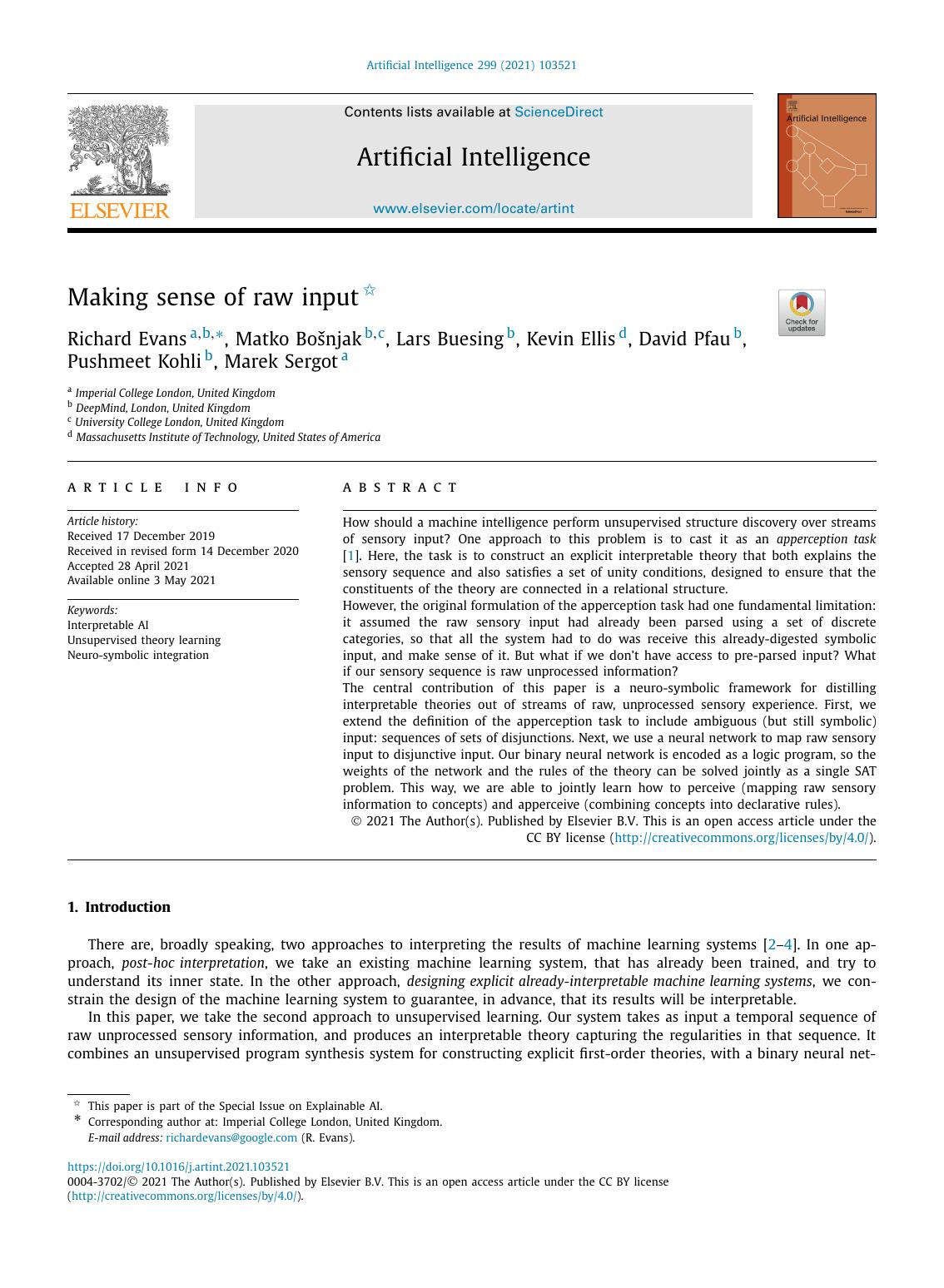

Most ebook files are in PDF format, so you can easily read them using various software such as Foxit Reader or directly on the Google Chrome browser.
Some ebook files are released by publishers in other formats such as .awz, .mobi, .epub, .fb2, etc. You may need to install specific software to read these formats on mobile/PC, such as Calibre.
Please read the tutorial at this link: https://ebookbell.com/faq
We offer FREE conversion to the popular formats you request; however, this may take some time. Therefore, right after payment, please email us, and we will try to provide the service as quickly as possible.
For some exceptional file formats or broken links (if any), please refrain from opening any disputes. Instead, email us first, and we will try to assist within a maximum of 6 hours.
EbookBell Team

4.0
66 reviewsHow should a machine intelligence perform unsupervised structure discovery over streamsof sensory input? One approach to this problem is to cast it as an apperception task[1]. Here, the task is to construct an explicit interpretable theory that both explains thesensory sequence and also satisfies a set of unity conditions, designed to ensure that theconstituents of the theory are connected in a relational structure.Keywords:However, the original formulation of the apperception task had one fundamental limitation:it assumed the raw sensory input had already been parsed using a set of discreteInterpretable AIcategories, so that all the system had to do was receive this already-digested symbolicUnsupervised theory learningNeuro-symbolic integrationinput, and make sense of it. But what if we don’t have access to pre-parsed input? Whatif our sensory sequence is raw unprocessed information?The central contribution of this paper is a neuro-symbolic framework for distillinginterpretable theories out of streams of raw, unprocessed sensory experience. First, weextend the definition of the apperception task to include ambiguous (but still symbolic)input: sequences of sets of disjunctions. Next, we use a neural network to map raw sensoryinput to disjunctive input. Our binary neural network is encoded as a logic program, so theweights of the network and the rules of the theory can be solved jointly as a single SATproblem. This way, we are able to jointly learn how to perceive (mapping raw sensoryinformation to concepts) and apperceive (combining concepts into declarative rules).© 2021 The Author(s). Published by Elsevier B.V. This is an open access article under the